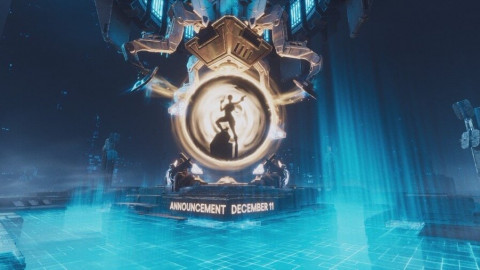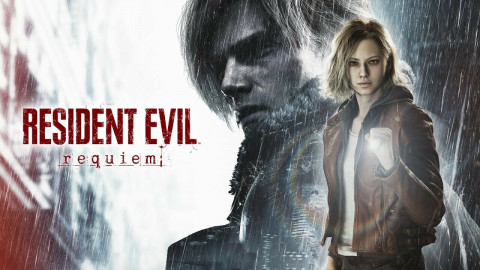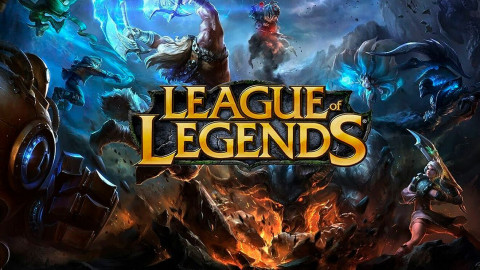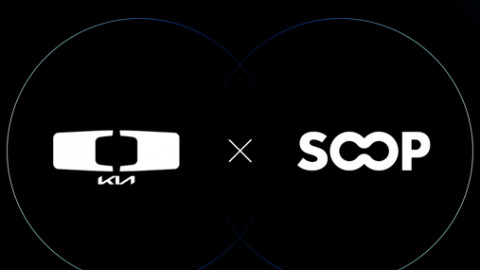
The speaker in this piece, Jun Hyuk Choi, is the general manager of Bluehole, who had been involved in Lineage 2, Blade & Souls, and other major MMORPG development at NCSOFT, along with TERA at Bluehole. He is one of the core development personnel of PUBG, the viral title that is loved globally.
Recently ranked No. 1 after Dota 2 in the top games by concurrent players, and having sold 10 million copies, PUBG is rapidly reaching new heights. The game has become quite a phenomenon, providing players with tons of fun and an odd sense of pride. How did the company begin with the development of such a game in the first place?
On the last day of IGC 2017 hosted by Inven, Jun Hyuk Choi, the general manager of Bluehole, gave a presentation about the ‘PUBG development story’. The presentation talked about how he saw the potential in the project that nobody was willing to approve, and how the game became what it is now.

In PUBG, a group of players is spread out across a vast field; everyone starts out with nothing, and the last one standing wins. The genre is known as Battle Royale.
The game was approved for development in March of last year, and with a team of 30, the project took a short period of 1 year to develop. After being launched as an early-access game in 2017, it sold a million copies in a very short time, and is continuously breaking that record.
“1 million copies sold, followed by 2 million copies in the shortest time, No.1 Steam sales, No.1 current players count…”
Mr. Choi introduced PUBG with the various records it achieved, and he also mentioned that the company is planning to make an official launch on Steam and the console version in the year of 2017.
“The development period of PUBG was short and experimental with a small number of employees. There was a short preparation period before it was approved, and the team proceeded with making the first milestone right afterward. Playtests by non-development personnel were done 4 times in total, and the internal playtest was done almost everyday. We tested the game after each meal, and all developers tried out the build at least once a day.”
The number of personnel in the development team was 30, including 4 foreigners at the start, and it is now over 100 after launch.
“I personally do not know the exact figure, because there are new people coming in every day.”
Development History - the unverified potential that PUBG possessed

“I was a member of the live team of TERA at the time. I was then over 40 years old, but still wanted to try out new things. That’s when Chang Han Kim, the producer of Devilion, came to me with a proposal.”
It was crucial that someone take on the responsibility of producer, as the size of the project was small and had not even been approved. Through a number of failures, Mr. Kim started development with the notion that this would be his last opportunity. What Mr. Choi noted was that Mr. Kim’s team consisted of people who had more than 10 years of experience. He thought that there must be a reason why these people are still with Mr. Kim after such a long time, and this lead him to join the PUBG project team. Of course, this was not the sole reason why Mr. Choi joined the team.
What drove him was the challenge that a new IP provided. Not only was this the sort of project he had been wanting to work on, but the low pressure along with the low expectations from the company gave it more potential and freedom. The main problems were that it was not a path the team was familiar with, and the deadline for the project was ever approaching. The project required a vast amount of time and personnel in order to realize the open world and various features it strove for. However, these issues ultimately did not bother Mr. Choi.
“Above all, my bucket list was fulfilled - Unreal Engine 4, AWS, and Steam”

Steam is the biggest distribution channel. Although success on the platform depends on what features the game holds, it is still a good place for specific types of games, such as package games or those in a somewhat minor genre. As most gamers use Steam, it is an appealing platform that developers can use to introduce their games to a wide variety of gamers. When the team considered the development cost of PUBG, selling 100,000 copies seemed to reach the BEP, and the average sales for titles on Steam were usually more than 100,000 copies, so they decided to launch it on Steam.
Amazon Web Services was also a good choice to utilize for servers. Putting up and bringing down the server can be done with a single button press, and you can respond to the users’ feedback with relative speed. It does not, however, mean that there were no problems, and PUBG also experiences connection issues. This is not because there was a lack in a number of servers, it’s just that the initial design did not match with the current situation. Mr. Choi added that they are working on gradually modifying the general design itself.
Moreover, Mr. Choi mentioned that they couldn’t develop the title without Unreal Engine 4. Though widely-used engines definitely possess limitations, it is definitely more advantageous in terms of cost and time when compared to starting from scratch. This point was significant, as the team didn’t have much time for the development process.
The Blueprint of Unreal Engine 4 helped the development process extensively, as it allowed project managers to create a simple prototype on their own. Since it is unrealistic to effectively deliver the full scope of an ambitious idea through a simple plan, making use of the blueprint ultimately reduced communication costs.
Milestone No.0 - Building the foundation of PUBG
As the team saw huge potential, the development was started even before they received approval. The very first step was to set up the environment for development. The team had time to practice a general outline of development by remodeling the shooting game of Unreal Project, and by playing H1Z1, ARMA, and other similar games.
There were various ideas implemented while forming the outline of PUBG. The team took note of different attributes such as finding gold chests in Uncharted, but they trimmed them down during the approval process. It was crucial to focus intently on the Battle Royale concept.

For that, the game needed a vast map that prevented players from being exposed to battle at all times. The tension rises dramatically when you face another player in the vast field, and that is the most important part. The fun of battle is also important, but that is just one of the ways to achieve victory in the game. The team also added the rating system and prizes, as it was likely something the game needed.
The fact that each match provides a new experience was considered one of the most important attributes of PUBG as well. How the beginning of a usual game unfolds is quite consistent though; you pick up items and head to the battlefield - not a whole lot of variety there. The team, therefore, added a randomized system in order to prevent that cliche, leading to new experiences for every match. Mr. Choi explained it as being one of the fundamentals of Battle Royale.
The biggest random variable out of everything is ‘the other player’. This is why a vast field is needed. It is important to spread players out in the vast world and lead them to unexpected encounters.
PUBG has been constantly compared with H1Z1, ARMA and others. Mr. Choi stated that the identity of PUBG lies between the reality of ARMA and the accessibility of H1Z1. Add a few features from CS: GO, and that is essentially the gameplay of PUBG that players enjoy now.
PUBG did not aim to have triple-A quality. The team instead focused on realizing the core playstyle quickly. To reduce the cost and fit the atmosphere of the game, they used the modern era as the general setting. After that, they focused on how to make every game start with every player on an even playing field and how to escalate that into an enjoyable battle royale.
Milestone No.1 - Approval, and the beginning of development
As the game was quite new, the team needed to thoroughly persuade executives. “The persuasion itself was not difficult. We have great executives.” In return for approving the development, the executives asked the team to bring in the original creator.

As the team proceeded with the actual development, the initial focus was to make a playable build. They had a clear objective and yet so little time. Thus, features were put straight into or were left out of the game without any discussion. Mr. Choi described his personal philosophy, affirming that something that is not created cannot be fixed. Communication was done by taking an action instead of going through discussions or documents.
The main goal was 'simplification'. Altogether, the designs included farming at the starting point, the world, firearms, vehicles, and other attributes. They started making the build thinking that the game was going to be all about killing with a gun, and this was the beginning of their agony.
They started to have problems even at the world realization process. The world with an 8km × 8km size is relatively bigger than that of other games, and therefore the team needed a blueprint that would provide a rough image. Brendan Greene brought a rough drawing and the development began from that. Of course, no prospective problem could be resolved during the first milestone stage. Therefore, the team engaged in preparing to make a better version.
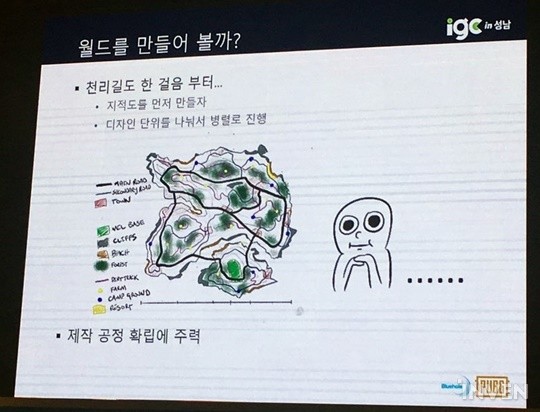
The number of firearms decided on, in the beginning, was 17. There was a discussion about whether the game should be realistic and have each firearm require a different ammunition type. The team decided to go with a more game-esque approach but add realistic features. That’s how we have the current ammunition in the game. There was also some implicit talk about overpowered features. For example, the team made attachments for the sniper rifle very rare in the game because of its excellent performance.

After finishing up firearms, we began to look for assets. The team changed a couple of firearms if there was no corresponding asset to it, in order to be right on the schedule. “Kar98k was added instead of the one that Brendan wanted because we couldn’t find an asset for it.” Mr. Choi mentioned that they outsourced the work and are now making a high-quality model.
Although making vehicles was not that difficult with the tutorial, there were still many problems that needed to be resolved. The server cost was too high, and it became a burden to place vehicles on the map. Moreover, delivering a realistic feeling of driving a car was also a time-consuming process. It was important that everybody feels comfortable with driving, and that a vehicle could carry a number of people. In addition to that, there was no suitable asset for vehicles, therefore they were made via outsourcing.
The most difficult process was recruitment. The team had to deal with action with simple data because they didn’t have an animator at the start. It was impossible to recruit an engineer from overseas as the project was not known, and most Korean companies were focusing on mobile games.
Milestone No.2 - External test, and a game that actually runs
The development took a step even further when the external test was decided. The art team began with the distant view details of the world based on a satellite picture. The process was mostly done automatically as it was not just a building or small map. The world artist Sergi from Spain joined the team around this time. In the end, the team had a complete version of the basic map with buildings, trees, and grass.
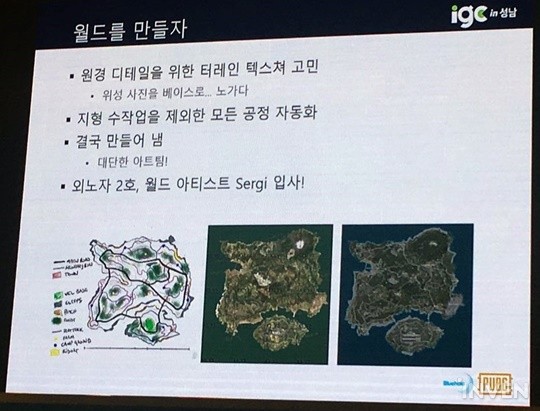
The 17 firearms designed in the beginning were added, followed by attachments including 3 types of scopes. The team then used motion capture data to make the designs they wanted to implement such as the line of sight. The basic combat-related attributes were prepared.
The development of vehicles was not looking good. The team had a problem with the physics simulation, and had to outsource the work. The modeling and driving tests also took a considerable amount of time to complete. The collision test proved that the team also had to work on the falling motion of objects in the air. Mr. Choi said that, as unexpected, problems came up on the surface, the team had to look into every piece of code, but couldn’t resolve many of the problems.
After that, the external test was done. Mr. Choi said that, although the game was not finalized, the test was done smoothly thanks to fans of Brendan Greene and thanks to players taking the 4 month development period into consideration.
Milestone No.3 - the introduction of PUBG
The test was done while revealing screenshots and videos. Mr. Choi described the moment of its introduction as nerve-wracking, as it was being introduced to the public for the first time. The objective was to complete the gameplay.
First of all, ‘falling’ was added as a mechanism in the beginning of the game. It was added due to the fact that the early stage of the game may become boring if a player dies too early. Players can take note of their opponents while falling, and keep away from each other. This method prevented players from congesting in one area where a number of items are spawned, and it also allowed them to farm freely at a distant area.
The red zone was not created with the intention to kill players. It randomly appears on the map, forcing players to ‘avoid’ it. Mr. Choi mentioned that they will change the random logic to an extent. Moreover, supplies were somehow difficult for beginners to obtain, and they are considering how to resolve this issue.
The attachments were added. They created the balance in order to equalize the performance of all firearms. For example, a pistol may deal a small amount of damage, but it is much easier to find the corresponding ammunition and attachments, whereas assault rifles are difficult to find because they are more powerful.
The team faced a number of issues when it came to making the cooking system. Although some used it quite well, it was generally difficult to be identified visually and others would’ve seen it as a bug. Mr. Choi said that this is still in progress. Furthermore, PUBG does not have a force control system, thus you need to change the way you pitch the weapon, and the team is still working on improvements for simplifying any complex attributes.

They also proceeded with improving the action. Referring to some feedback received from the last test, they modified the jump to be slower at each consecutive in order to prevent bunny hopping. Also, they set the accuracy rate to be different depending on how you aim, in order to differentiate the game from H1Z1. The difficulty of aiming at mid to long range with assault and short rifles is increased, and vice versa at close range as it is crucial to aim quickly.
Then, Marek joined the team. The team received a number of opinions about implementing fun things such as the rifle being lifted up when the character approaches the wall. While looking for related data, the team found a couple of Marek’s studies made by Unreal Engine on YouTube. The studies had most of the features the team was looking for. The team contacted and had him work together with them.
“He resolved a number of issues right after joining the team. I began to like him because of his challenging and enthusiastic character.”
Then, the public alpha test has proceeded. The NDA was canceled and it was streamed on Twitch as well. 128 streamers joined, and the viewer count reached No.5 for two consecutive days on the list.

“It was amazing to see PUBG standing right next to prominent titles. It’s placed in the front now though.”
It’s not just gamers, but also stream audiences who are customers of the game. They are potential users, and can promote the title even without buying the game. The same thing applies to eSports. The audience members watching eSports are also part of the consumers, and viewership has become quite important in general.
Milestone No.4 - the agonizing period with higher objectives
“We’ve gone through a lot during these days, and I don’t want to remember those moments so I will go over these slides quickly.”
After Marek joined, many features became available. Along with these new features came a new main objective. Something that was asked quite a bit during this period was ‘how is this different from H1Z1?’. People pointed out that the action of PUBG was exactly the same as the action in H1Z1, so the team set their objective: make the action in PUBG distinct.
The team then needed to hire a technical animator in order to make the action have realism, intuition, and character. That’s how Pawel joined the team. He was a skilled individual with a background as an animator who launched a 1-man developed game, and was from Bohemia Interactive, the company that made the ARMA series. The team then started to study motion capture with Pawel.
There was no suitable place, and the cost was not affordable in South Korea. Pawel then made a suggestion of doing the motion capture at his last workplace at a cheaper price, so 4 team members went to the Czech Republic. Along with getting the motion capture, they also visited a shooting range and fired a couple of rifles and pistols to obtain sound references, and took photos of firearms for the asset process.

Some gunplay enhancement took place as well. The first priority was ‘world origin shifting’. The problem was the constant occurrence of aim jitters caused by the large size of the map. It was too detrimental to the gameplay and had to be resolved at all cost. Epic Games was aware of this problem, and was preparing the engine patch for resolving this issue, but it was not going to match up with the schedule of PUBG.
Also, aiming needed improvement in general. Marek added a foggy effect around the sight when you aim, along with extra details such as a slight sway when aiming. The crossbow was added at this time.
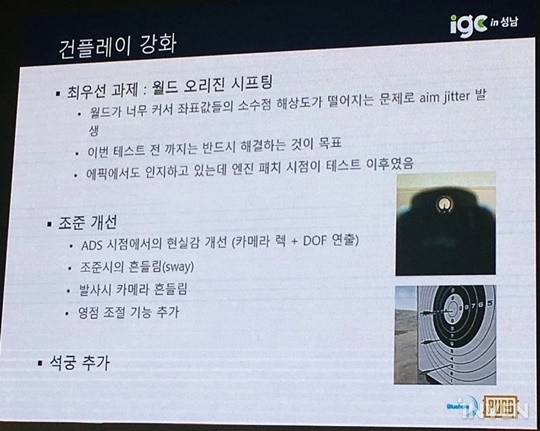
The UI had been modified to include all information about items and equipment in one screen. It was intended to show what kind of equipment you have without a separate inventory screen. The objective was to minimize the general UI.
The team put a lot of detail into the sound of PUBG, so that the different noises would provide information during the game. The sound was made to indicate distance and allow players to know how far someone or something was.
As the sound of firearms was more important, the vehicle sound-work was postponed. Mr. Choi said that they still haven’t started on it, and will have a certain amount of time to get on with it.
Then, the 4-week alpha test began. 800 streamers joined the process, and the game placed No.5 in the ranking.
“And the ranking was still higher than H1Z1. We had this odd feeling, because we always wanted to catch up to H1Z1, as we considered the title to be our rival. I suppose that we began to see the way out.”
The Last milestone, polishing
They have confirmed that there will be no more additional content put in the game during the last stage of development. First, they spent a considerable amount of time on UI overhaul. The objective was to make a simpler screen. The results page was changed as well. As streaming was also important, it was crucial to make a UI that is visible in one screen.
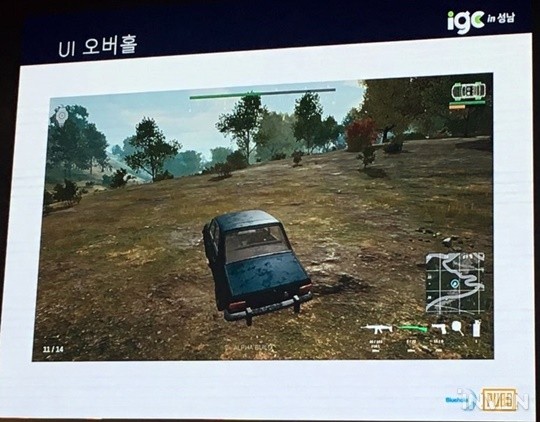
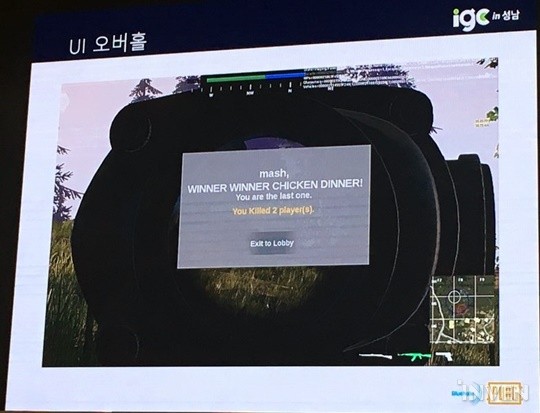
The Blueprint can be used even by a designer, with just a bit of help from a programmer. Although the process is done via coding after the game becomes complex, it is still helpful for designers to know how to use the program before that stage.
Lastly, they got on with the world polishing process. They added a number of details such as a plain, barley field, bunker, and graffiti on buildings. Also, the river was added to the map a month before launch.
“This is the part I feel a bit bad about, but I suggested to add the river in the map a month before the launch. I expected to be met with rejection, but the team rather said we should add a hidden city around it. And, that’s how it was added.”
Live - the incremental graph of PUBG
After the launch, the updates have been done on a daily, weekly, and monthly basis. The monthly update is a major update, weekly for optimization, and daily for fixing any major bugs.
And PUBG now shows steady incremental sales and current player count.
“I was told that this kind of uptrend is quite unusual. We are trying our best to follow the pace as well.”

All in all, what is PUBG’s main factor of success from Mr. Choi perspective?
First of all, Mr. Choi pointed out the global launch through Steam and AWS. It was possible to evaluate the situation and react to it quickly. As the team was aiming for simple gameplay, fast iteration and reaction were important.
It was crucial that the team receive feedback from all kinds of users and people. This is one of the reasons they launched the game as an early-access. Moreover, the game that fits the tastes of people from all around the world could be made because of multi-cultural developers on the team. This also widened the user pool.
The fact that the game was fun to watch also promoted the title and made it go viral on Twitch, which opened the team to the possibility of the game being a successful piece of streaming content. Through the Twitch league, the team received a love call from a renowned eSports league from overseas, and PUBG professional teams began to emerge.
The future with the official launch ahead
“We can’t predict anything now. However, we need to prepare with what we have now and prepare for what is ahead of us at least.”
How to create a fair and fierce competition in relation to eSports is the main concern, said Mr. Choi, and he pointed out the eSports sector as a top priority. Although the title has been a part of eSports a number of times through Twitch and the Gamescom Invitational, he said that they still have a long way to go, and are currently developing an appropriate scoring system.
Furthermore, the expansion of a custom game and balancing by analyzing the data will be taken into consideration.
Though stabilization is the important task, they are also working on vaulting and climbing, which would make the gameplay more dynamic. A super jump will not be added. New weapons are currently in development, but Mr. Choi insisted on not disclosing any information about it, and mentioned that lesser weapons will be added together with strong weapons.

New maps will be added, along with a complete change of the lobby, as the current lobby was applied temporarily. Parts of the UI will be improved with the general frame intact. Also, a game replay system will be added.
Mr. Choi ended the presentation, saying with an aspiration, that the team will add make the gameplay more complete and satisfying as the title’s official launch draws near.
Sort by:
Comments :0



